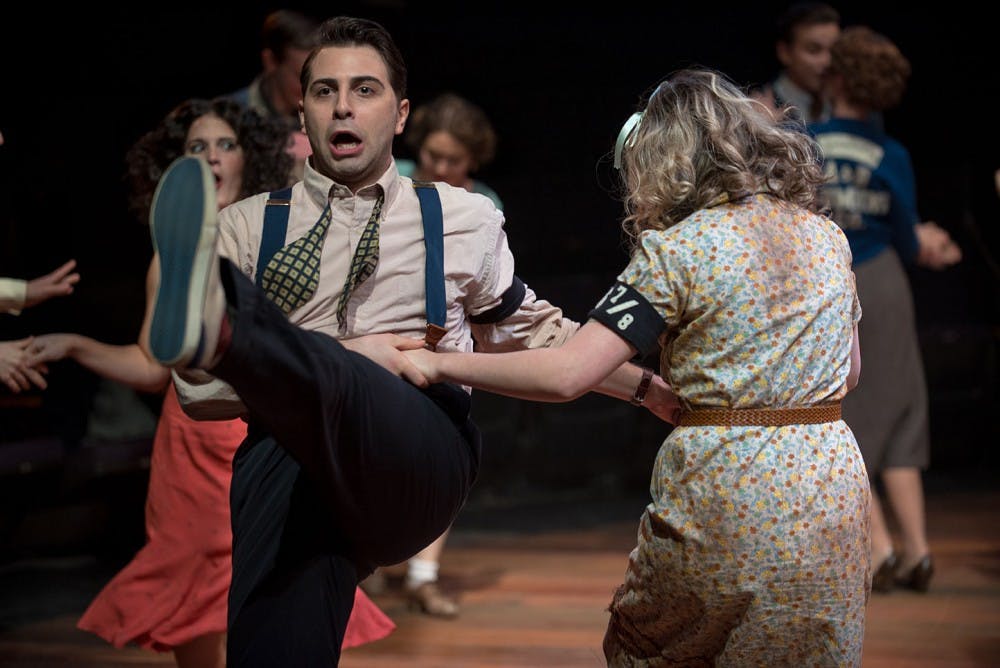The play comes a week after OU hosted a dance marathon of its own.
Ohio University recently held its first-ever dance marathon, the BobcaThon, where students danced for 12 hours to raise money for Ronald McDonald House.
In the 1930s, people would dance for thousands of hours in order to have a place to sleep, eat and make a little bit of money, all while audiences would fill arenas to watch.
The first Division of Theater main stage production of the spring semester Marathon ’33 by June Havoc — aka the real “Baby June” of the famed Gypsy musical — analyzes the dance marathons of the Great Depression.
“(The marathoners) were exhausted, had bloody feet, could barely walk and people treated it like a circus act,” said Elizabeth Johnson, who plays June in the show and is a senior studying theater performance. “It was a hard time in this country’s history, but this is a part that I think goes overlooked.”
The play centers on June “Jean” Reed’s first time at a dance marathon in 1933 and all the heights and pitfalls that go with it.
“I see so much of myself in her,” Johnson said. “She’s a dreamer. I’m a dreamer. Her determination — it’s naïve determination, and that’s me. I equate her to Elizabeth when I first got to OU and her journey (of growing up), I hope, will be me at the end of my journey at OU.”
Emilio Tirri, a third-year graduate actor, plays Patsy, the experienced clown and entertainer of the marathon, who dances with June. He said he didn’t know about this phenomenon until he researched for the play.
{{tncms-asset app="editorial" id="6b620eae-b548-11e4-bcc3-035cde9e32a6"}}
“What’s going on in this time is just what these people did to survive,” he said. “For me, the main question of the show is ‘Why would I do this?’ ‘What am I fighting for?’ … People did this to their bodies and minds for months. It’s actually pretty absurd and very dangerous.”
Tirri’s role highlights the rather sadistic elements of the dance marathon.
“It’s a business, just like a sporting event now. … It’s almost like the Roman Colosseum,” he said. “It was something to entertain people out there who had money to throw (at the marathoners).”
With 31 actors, it is one of the largest OU casts. It is also collaborative in that the members of the live band on stage are School of Music students and faculty.
The play is third-year graduate director Aurora Held’s thesis production. She said she worked with Dennis Delaney, the head of the professional director training program, to find material that would complement her training in not only theater but music and dance as well.
Dance numbers were noted in the script, Held said, but there wasn’t a set way of putting it all together.
“So we chose the songs, and I choreographed the dances myself,” she said. “The musical component was the hardest part of the play because we wanted to be true to the period, but we wanted to be careful with the music people know. We don’t want to pull an audience member out if they heard a song somewhere else.”
One dance number to look forward to is a big production of the Charleston.
“It’s a really fun dance,” Johnson said. “I’m hoping to bring it to parties.”
@buzzlightmeryl
mg986611@ohio.edu






